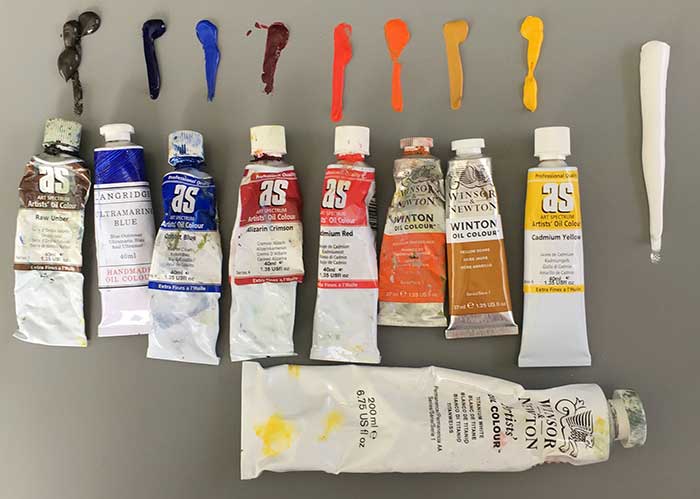How Long for Oil Based Paint to Dry
Oil paint is inherently slow drying compared to the other painting mediums such as acrylic, watercolor or gouache paints. Because of this, you have much more time to manipulate oil paint on your canvas before it dries. This is one of the reasons why oil paint is so widely used by artists.
So how long does oil paint take to dry? The answer is, it depends.
In this post, I will discuss the factors which influence the drying time of oil paint and how you can manipulate the drying time.
What Factors Influence The Drying Time Of Oil Paint?
Oil paint does not have a fixed drying time. In general, it dries slower than the other mediums. However, the actual drying time varies depending on:
- The surrounding environment - the local temperature, light, wind, etc.
- The pigment color - some colors dry faster than others.
- The brand of paint.
- The quality of the pigment.
There are many other factors which may influence the drying time of oil paint but these are the main ones.
The Relationship Between Pigment Color And Drying Time

As noted above, the color of a paint can influence the drying time. Here is a summary of fast and slow drying paint colors:
Fast Drying Colors
- Burnt umber
- Cobalt blue
- Raw sienna
- Burnt sienna
Slow Drying Colors
- Blacks
- Sap green
- Alizarin crimson and most other reds
- Any cadmium colors (cadmium yellow, cadmium red, cadmium orange, etc)
The Drying Times Of Different Oils
In oil painting, there are a number of different oil mediums which you can use to give your paint more fluidity. These include linseed oil, poppyseed oil and safflower oil. You can also use an alkyd, which is basically a synthetic oil.
Here is a summary of the different drying times of these oil mediums:
Fastest Drying
- Linseed oil
- Alkyds
Moderate Drying
- Safflower oil
Slowest Drying
- Poppyseed oil
In oil painting, I only use linseed oil however, you may also find poppyseed oil to be useful for keeping your paint brushes wet during painting sessions.
(If you want to learn more about color, make sure to grab my free Color Theory Cheat Sheet).
How To Speed Up The Drying Time Of Oil Paint
You can speed up the drying time of oil paint to some extent by using:
- A paint thinner. I use odorless solvent by Winsor & Newton; or
- Using an alkyd medium. However, I do not have any experience using alkyds nor do I believe they are necessary.
When I start an oil painting, I will usually thin the paint using odorless solvent so that it becomes a thin wash with a watercolor-like consistency. This layer of paint dries quickly (within 24 hours). After that, I embrace the slow drying time of oil paint, rather than try to avoid it. This process is demonstrated in the painting below.


You could use an alkyd medium to speed up the drying time, but I do not think that is necessary. If you want a paint which dries quickly, then use watercolor, gouache or acrylic paint. There is no need to force oil paint to be something it is not. It is much more effective to embrace the qualities of the paint.
How To Slow Down The Drying Time Of Oil Paint
You can slow the drying time of oil paint by adding more oil. As discussed earlier, the oil medium you use will influence the drying time. Your paint would dry much slower if you mix it with poppyseed oil compared to the standard linseed oil.
So as a general rule, the more oil that is in your paint, the slower the drying time.
Painting Hack: How To Stop Your Oil Paint From Drying On Your Palette Between Sessions
If I am doing a large-scale painting, then rarely will I be able to finish it in a single session. The painting will often run over numerous days.
A simple way to preserve the paint on your palette between sessions is to wrap the palette in baking paper to stop the paint from drying out. This will only work for one night, but it is effective to some extent. You will notice some drying though.


How Long for Oil Based Paint to Dry
Source: https://drawpaintacademy.com/oil-paint-drying-time/